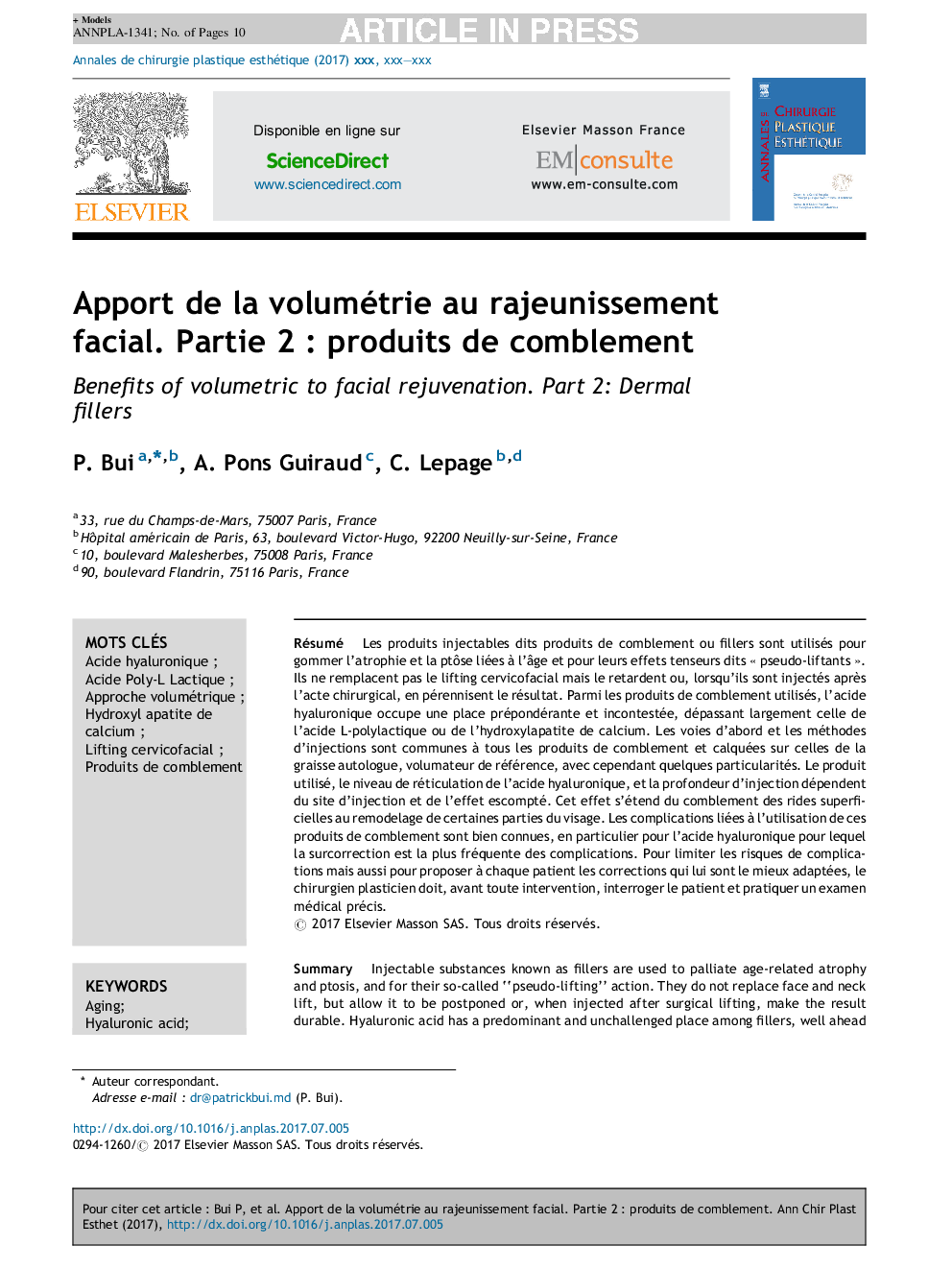| Article ID | Journal | Published Year | Pages | File Type |
|---|---|---|---|---|
| 5644495 | Annales de Chirurgie Plastique Esthétique | 2017 | 10 Pages |
Abstract
Injectable substances known as fillers are used to palliate age-related atrophy and ptosis, and for their so-called “pseudo-lifting” action. They do not replace face and neck lift, but allow it to be postponed or, when injected after surgical lifting, make the result durable. Hyaluronic acid has a predominant and unchallenged place among fillers, well ahead of poly-L-lactic acid or calcium hydroxyapatite. Approaches and injection methods are the same for all fillers, corresponding to those for autologous fat injection, the reference substance, with a few particularities. The substance used, the level of hyaluronic acid reticulation, and the depth of the injection depend on the injection site and intended effect. Effects range from smoothing superficial wrinkles to remodeling whole parts of the face. Complications related to such fillers are well known, especially in the case of hyaluronic acid, where overcorrection is the most frequent. To limit the risk of complications and also to offer each patient the most individually adapted corrections, before any procedure, the plastic surgeon needs to question the patient and perform precise medical examination.
Keywords
Related Topics
Health Sciences
Medicine and Dentistry
Dermatology
Authors
P. Bui, A. Pons Guiraud, C. Lepage,
